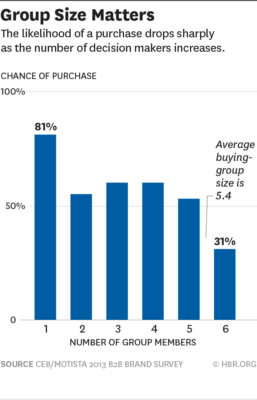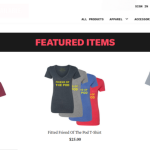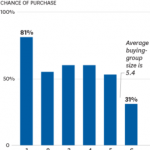Better insights provide real inroads for breakthrough ROI
How can you improve the productivity of your marketing and sales teams? Columnist John Steinert explains how closing four data-based gaps will help you see huge productivity gains in 2018.

Until I discovered the battery-sucking genius of Waze, my daily Connecticut commute was hell. Now, thanks to its ingenious crowd-sourcing approach, Waze always finds the best route. Better navigation calms me down; it lets me think while I drive, and that makes my day more productive right from the start.
Better data helps marketing and sales navigate, too. And with insights from the right sources, your teams can create the inroads you need to win.

Better productivity starts with knowing where you’re going
Cheap tools have made “spray and pray” all too easy in the B2B marketing world. On the receiving end, we’ve all come up with our own ways of ignoring the deluge. With everyone focused on volume, all those dials are not creating nearly enough smiles on either end of the phone.
The first overarching insight is that too much of this is simply waste. We’re targeting a lot of the wrong companies. Even when the fit is right, the timing is often wrong.
To improve productivity in 2018, begin with simply thinking through the realities of your particular situation. Of course, the actionability of your plans depends on getting data that can support better-informed changes in your approach.
Think through the big picture first. Then identify how you’ll take meaningful action for change.
The annual TAM: Thinking through your real addressable audience for 2018
- For 2018, rather than including numbers for everyone you think should want your stuff, consider establishing an annual total addressable market (TAM) that’s more conservative in scale and scope. Begin with determining who will absolutely need it, and work up from there. This is “fit,” which I’ll drill into in a minute.
- Identify the gaps in your process, capabilities and resources that fundamentally limit who you can expect to reach and engage next year. Reduce your 2018 TAM accordingly, and start thinking what changes will absolutely have to occur to increase it. A big one to think about is exactly where you might source more demand.
- Compare your historically based growth targets to your TAM and identify any major issues that require an expansion of your 2018 TAM. If the numbers don’t tie together well, you know you’ll have to budget for a change.
- Examine the sell-through ratios you’ll have to achieve. Identify key leverage points where additional information could drive significant outcome improvement without forcing TAM increases. This will help point you to the types of data you really need.
Use insight to optimize targeting and improve ‘fit’
When you direct too much effort to the wrong people (and too little to the right ones), ROI dies. Though the incremental cost of another email is tiny, the impact compounds across your teams. There’s the cost of the content that doesn’t work, the cost of database capacity in your marketing automation platform (MAP) and customer relationship management (CRM), the events that don’t pay out, the staff of inside salespeople making ineffective calls, the field sales guys’ time wasted prospecting at the wrong accounts and more.
In our enterprise technology markets, clients achieve real productivity gains across the board when they add technographics to their data toolkit. In tech, providers like HG Data can tell you both who will need your product (because what they have is at end of life) and who will get the most out of your product (because it works well with what they have).
While you’re certainly free to go after additional targets, real productivity in 2018 will grow if you focus on exactly those accounts that you need to consider.
Maximize focus by concentrating on ‘active demand’
Even though we’ve gotten conservative with TAM, most organizations will still need a way to make sure they have enough resources to make an impact when and where it really counts. This is why SiriusDecisions built the “active demand” concept into their new Demand Unit Waterfall. They’re calling out the fact that better ROI comes from deploying resources where demand is actually happening.
Why? Because resources spent elsewhere will have far less impact on the bottom line. The question you need to quickly ask and comprehensively answer is: “How will I maximize my access to active demand?”
Moving from insights to inroads
To turn this SiriusDecisions insight into an inroad to better ROI, your MAP and your website are the first places to look. You’ll have responders to your outbound efforts and website visitors coming inbound. But that’s only the demand you’ve already engaged; it’s not the total active demand in the marketplace.
To really rock your ROI, you’re going to have to address gaps in what you can target. The good news is that there are better resources available than ever before. If you identify those now, you can have them in place to start improving ROI in January right out of the gate. Here’s a look at four obvious gaps you can close:
Closing gap 1 — Maximizing access to active demand
Assuming you’re a big-ticket B2B firm (vs. an e-commerce transactional one), chances are you don’t have a handle on how much demand is out there. Most companies only know what they accomplished last year and what they see from their own outbound and inbound.
If you’re not looking beyond your own MAP and website, you’re missing a lot of the total opportunity out there. And even if you’ve made the plunge into predictive modeling with a reputable outfit, unless you’re sure you’ve got the best available data sources feeding it, you’re going to waste effort on accounts that aren’t in an active buy-cycle. And even if they are, you’ll waste time finding the right people to engage.
To maximize access to active demand, you need the right data sources: data generated by known people exhibiting buying behaviors directly related to what you sell.
Closing gap 2 — Understanding and acting on account demand intensity
Since all the major marketing automation systems focus on individual people, many marketers don’t look much at accounts in their lead funnels. Furthermore, even when accounts are prioritized, most teams aren’t utilizing scoring-by-account to differentiate between them. Yet since it’s the accounts that sales cares about (and by extension, ROI at the account), wouldn’t it behoove us to follow their example?
To this end, understanding demand intensity by account is an important gap to close for two reasons: First, because intensity is the most effective pointer toward real demand that exists. And second, because that’s exactly where marketing and sales should be focusing their shared energies.
When the signals are clearly understood and the actions they trigger are agreed upon, the team is properly aligned, and the probability of success goes up. If you create an ability to properly score account demand intensity for action, you’re building an inroad to better ROI.
A predictive model alone is unlikely to deliver a clear enough view of total active demand to fully enable intensity-based actions. To close this gap, you’ll want to look for providers that offer purchase intent data that’s specific to your niche and can rank accounts for you based on intensity. Make sure that intent data includes identification of the active individuals so you can avoid wasting valuable time and effort on low-priority contacts.
Closing gap 3 — Identifying active buying teams
To trigger productive sales efforts, you need the account, the contacts and the behavioral indicators that warrant sales attention. Until recently, though, it’s been hard to put these all together efficiently. Leads in your MAP likely include necessary contact information, but you may not understand intensity. A variety of technologies can tell you which companies are browsing your website, but that doesn’t give you active contacts.
Robust purchase intent data can identify both the active accounts and the additional relevant active prospects to give you a clear read on intensity. What could still be missing? Marketing techniques have become really good at finding demand because the internet allows us to see what people are interested in. Unfortunately, in big-ticket B2B decisions, the folks exhibiting intense buyer research behavior may not be all of those critical to completing the deal.
To reach consensus and close on a B2B purchase, more than five people are involved, according to CEB research. To truly mobilize your sales team, they need additional help identifying members of the buying team who haven’t exhibited enough identifiable behavior to become visible either in your own systems or from third-party sources.

Certain titles will wield powerful influence on the deal, and you need sales to engage with them. But rather than fall back on acquiring large volumes of contact information that you’ll waste a lot of tactical resources pursuing, you can now find providers that deliver only those contacts relevant to your deal. This is your inroad to the total buying team.
Closing gap 4 — Using insights effectively to drive engagement
While closing gaps 1–3 gives you all the insight you need to maximize targeting effectiveness, you still need to make sure you have what it takes to create positive engagement.
In addition to what you know about prospect account interests (given what they consume on your website and through your lead gen), your purchase intent data provider may offer a wealth of additional information about what content your active prospects are consuming, such as relevant editorial material, competitor communications, related solution areas, and potentially, even details around the key drivers of past purchases in your space.
When you can build this into your marketing assets, your ISR (inside sales representative) scripting and sales enablement training, your team will be totally prepared.
Achieving breakthrough ROI in 2018
As we head toward 2018, if you can make these few adjustments to how you frame out the year’s challenges and close addressable gaps, your chances of hitting breakthrough ROI have never been better.
While we’re still a bit away from having a tool like Waze for sales and marketing, real improvements in the data space, particularly in purchase intent, offer gains that true competitors will want to take advantage of. Insights like this will help you make the inroads you deserve.
Some opinions expressed in this article may be those of a guest author and not necessarily Marketing Land. Staff authors are listed here.
Marketing Land – Internet Marketing News, Strategies & Tips
(5)













